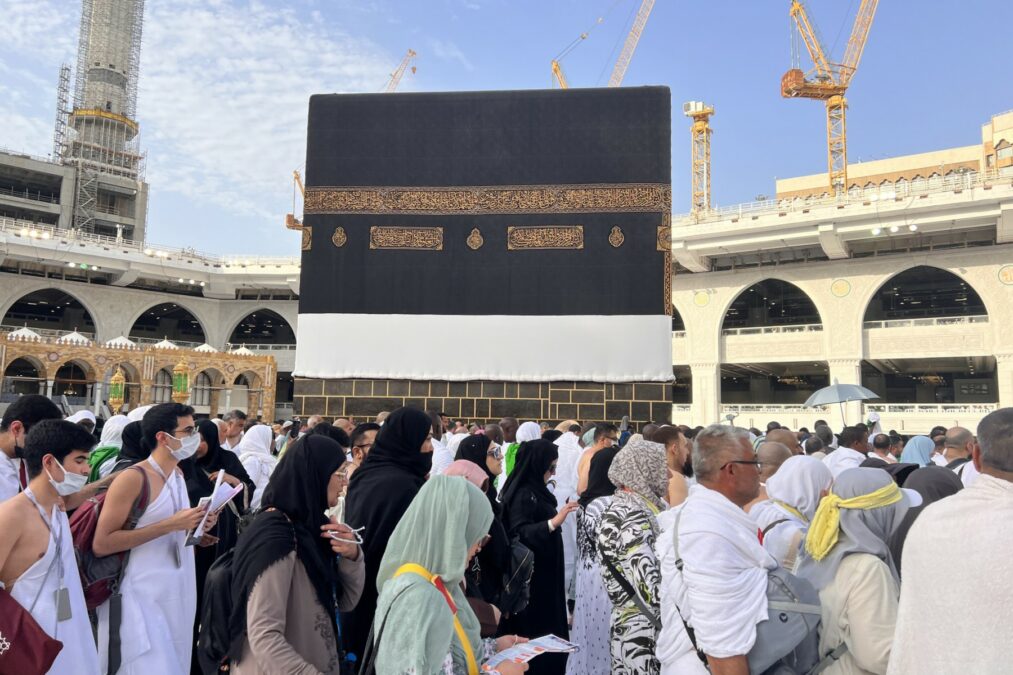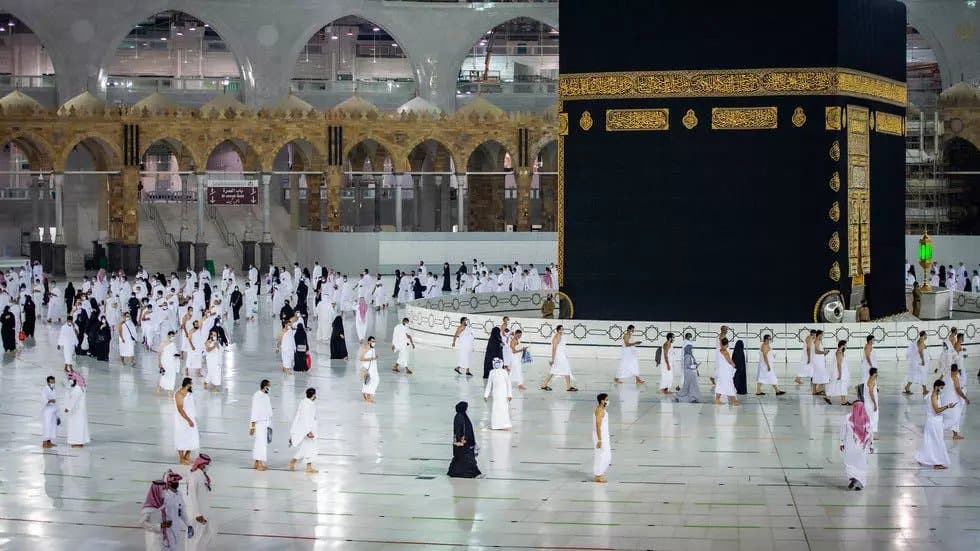Mecca, Saudi Arabia– Vast crowds of robed pilgrims made solemn circles around the Kaaba, the black cube at Mecca’s Grand Mosque, on Sunday as the biggest hajj pilgrimage in years began in the heat of the Saudi summer.
Islam’s holiest site is expected to host more than two million worshipers from 160 countries during the annual rites that could break attendance records, with 1.6 million foreigners already arrived by Friday evening.
The hajj began early on Sunday with the “tawaf” -– the circumambulation of the Kaaba, the large cubic structure draped in black cloth with gold trimmings that millions of Muslims pray towards every day.
“I am living the most beautiful days of my life,” said Abdel-Azim, a 65-year-old Egyptian as he performed the ritual.
“The dream has come true,” said the retiree, who saved up for 20 years to pay the $6,000 fee to take part.
The hajj is one of the five pillars of Islam and must be undertaken by all Muslims with the means at least once.

A series of rites are completed over four days in Mecca and its surroundings in the west of oil-rich Saudi Arabia.
On Sunday night, pilgrims will start moving to Mina, about five kilometers (three miles) from the Grand Mosque, ahead of the hajj’s climax at Mount Arafat, where the Prophet Mohammed is believed to have delivered his final sermon.
‘Great blessing’
Outside the Grand Mosque, thousands prayed on colorful carpets that adorned the pavement, with male pilgrims wearing a simple white robe. The area was dotted with ambulances, mobile clinics and fire trucks.
The hajj poses a considerable security challenge and has seen several disasters over the years, including a 2015 stampede that killed up to 2,300 people.
There have been no major incidents since, and catastrophe was the last thing on pilgrims’ minds.
“I cannot describe my feelings,” said 25-year-old Indonesian student Yusuf Burhan.
“This is a great blessing. I never imagined that I would perform the hajj this year.”
This year’s summer timing for the hajj, which follows the lunar calendar, will test the endurance of worshipers during the mostly outdoor ritual.
Carrying white umbrellas to protect themselves from the scorching sun, policemen in the mountainous city have conducted foot patrols and set up checkpoints to inspect hajj permits.
Others splashed water on pilgrims as temperatures climbed towards 45 degrees Celsius (113 degrees Fahrenheit).
Inside the Grand Mosque, thousands of paramedics stood on standby. Saudi authorities said more than 32,000 health workers will be on hand to help fend off heatstroke, dehydration and exhaustion.
‘Not a single vacant bed’
The hajj, with its hefty fees, makes billions of dollars a year for the world’s biggest oil exporter, which is trying to diversify its economy beyond fossil fuels.
This year’s will be the biggest since 2019, when about 2.5 million people took part. Only 10,000 were allowed in 2020, at the height of the coronavirus pandemic, rising to nearly 59,000 in 2021. Last year’s cap of one million has been removed.
Saudi businessman Samir Al-Zafni said all his hotels in Mecca and Madinah are at full capacity until the first week of July.
“This year there is not a single vacant bed in our group of 67 hotels,” he told AFP from his office.
The hajj also demonstrates social reforms in the deeply conservative country. This year’s pilgrimage will be the biggest since Saudi Arabia scrapped rules in 2021 that banned women who weren’t accompanied by a male relative.
Leaving the Grand Mosque after evening prayers on Friday, Ramot Ali from Niger struggled to describe the feeling of performing hajj for the first time.
“I am very happy,” she said.
The Makkah Route initiative
In 2019, Saudi Arabia launched the Makkah Route Initiative, which aims to complete all procedures for pilgrims in their countries to reduce pressure on its facilities and facilitate the passage of pilgrims.
The procedures include luggage, health, and visas in the country of departure. So, when a pilgrim enters the plane, it is as if he is on a local flight. , and he gets off his plane to his residence immediately.
To speed up transportation of pilgrims’ luggage to Makkah or Madinah, the program includes a tagging service that codes and classifies luggage at airports in different countries. Stickers with each pilgrim’s flight details and home address are affixed to luggage and passports.
A specialized crew, overseen by the Ministry of Hajj and Umrah, provides the service. The luggage is collected by King Abdulaziz International Airport staff in Jeddah and Prince Mohammed bin Abdulaziz International Airport in Madinah.
This year, the initiative includes seven countries: Indonesia, Pakistan, Bangladesh, Malaysia, Morocco, Turkey, and Côte d’Ivoire.
Revenues
Before the pandemic, pilgrimage revenues were forecast to average about $30 billion a year and create 100,000 jobs for Saudis by 2022. The kingdom attracted around 21 million worshippers annually during the 10-day Hajj and Umrah pilgrimages, according to official data cited by Reuters.
The number of pilgrims shrunk significantly during the pandemic but the government is targeting 30 million pilgrims by 2030.

